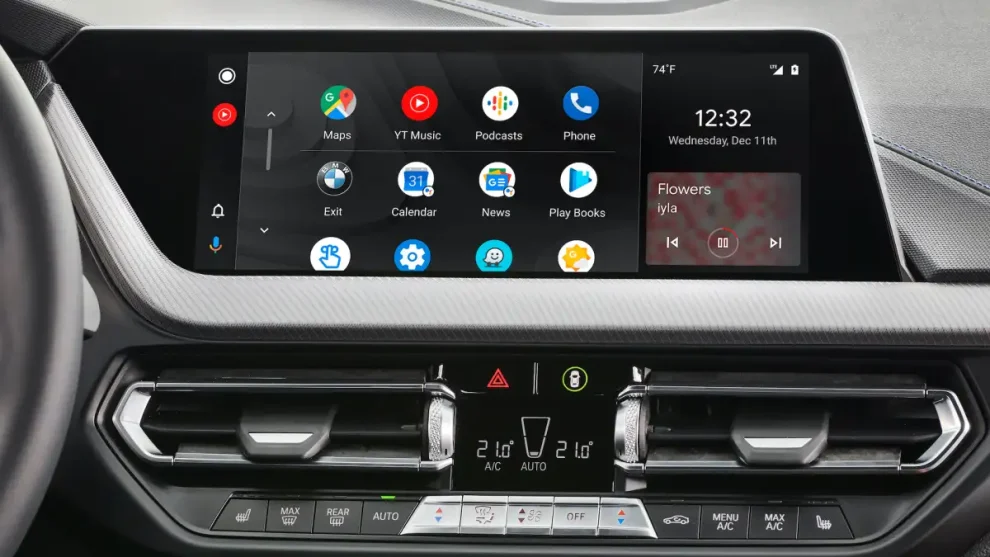Google has officially launched Android Auto 13.1, the latest iteration of its popular automotive interface. This update, eagerly anticipated by millions of drivers worldwide, promises to bring a host of new features and improvements to the driving experience. However, as is typical with Google’s Play Store rollouts, the company has announced that it may take up to several weeks for all users to receive the update, leaving many in a state of anticipation and sparking discussions about the nature of phased software deployments.
Android Auto 13.1 isn’t just another incremental update; it represents a significant leap forward in Google’s automotive ambitions. While the company has been somewhat tight-lipped about the full extent of the changes, early reports and beta testers have highlighted several key improvements:
1. Enhanced Voice Recognition: The update is said to feature a more robust and context-aware voice recognition system, allowing for more natural interactions with the Google Assistant while driving.
2. Improved Navigation Integration: Users can expect deeper integration between Google Maps and other navigation apps, with more seamless transitions and real-time traffic updates.
3. Customizable Interface: Android Auto 13.1 introduces more options for personalizing the interface, allowing users to tailor their experience to their specific needs and preferences.
4. Better App Compatibility: The new version promises improved compatibility with a wider range of third-party apps, expanding the ecosystem of available services.
5. Performance Optimizations: Under-the-hood improvements aim to reduce lag and enhance overall system responsiveness, particularly on older hardware.

Dr. Sarah Chen, an automotive technology analyst, comments on the significance of these updates: “With 13.1, Google is clearly aiming to make Android Auto not just a convenience, but an integral part of the driving experience. The focus on voice interactions and personalization shows a deep understanding of how drivers actually use these systems in real-world conditions.”
While the features of Android Auto 13.1 are certainly exciting, Google’s chosen rollout strategy has become a topic of discussion in itself. The company’s decision to deploy the update gradually over several weeks is not unusual for Google, but it raises questions about the benefits and drawbacks of this approach.
Mark Thompson, a software deployment specialist, explains the rationale behind staggered rollouts: “By releasing the update in phases, Google can monitor for any unforeseen issues or bugs that might not have been caught in testing. If problems arise, they can quickly pause the rollout, potentially affecting only a small portion of users instead of the entire user base.”
However, this cautious approach is not without its critics. Some users and industry observers argue that it creates an uneven playing field, with some drivers benefiting from new features and security improvements while others are left waiting.
John Doe, a frustrated Android Auto user, voiced his concerns on a popular tech forum: “It’s maddening to know that the update is out there, but I might not get it for weeks. In an age of instant updates, this feels outdated and unfair.”
The rollout of Android Auto 13.1 has implications that extend far beyond individual users. Car manufacturers, app developers, and even competing platforms are all closely watching how this update unfolds.
1. Car Manufacturers: Many automakers have invested heavily in Android Auto integration. The new features in 13.1 may require updates to in-car systems, potentially affecting production schedules and software development roadmaps.
2. App Developers: The expanded app compatibility in 13.1 opens new opportunities for developers to bring their services to the automotive space. However, the gradual rollout means they may need to support multiple versions of Android Auto simultaneously.
3. Competing Platforms: Rivals like Apple’s CarPlay will be keeping a close eye on how Android Auto 13.1 is received, potentially influencing their own development priorities.
Emily Watson, Head of Automotive Partnerships at a major tech company, notes: “Updates like this can shift the balance in the highly competitive automotive software market. It’s not just about the features themselves, but how quickly and smoothly they can be delivered to end-users.”
One often-overlooked aspect of software updates, especially in the automotive sector, is their impact on security. Android Auto 13.1 is expected to include several security enhancements, making the gradual rollout a subject of debate among cybersecurity experts.
Dr. Alex Rivera, a cybersecurity researcher specializing in automotive systems, explains the dilemma: “On one hand, we want security updates to reach all users as quickly as possible to protect against known vulnerabilities. On the other hand, a measured rollout helps ensure that the update itself doesn’t introduce new security risks.”
This balance between rapid security deployment and cautious rollout strategies highlights the complex challenges faced by companies like Google in managing large-scale software ecosystems.
As millions of Android Auto users eagerly await their turn to update, a subculture of tips, tricks, and workarounds has emerged online. Some of the strategies being shared include:
1. Manual Checks: Frequently checking for updates in the Google Play Store.
2. Beta Program Enrollment: Some users are signing up for Google’s beta programs in hopes of getting earlier access.
3. APK Sideloading: More tech-savvy users are discussing the possibility of manually installing the update, though this comes with its own risks.
However, Google strongly advises against any attempts to circumvent the official rollout process, warning that it could lead to stability issues or even security vulnerabilities.
The rollout of Android Auto 13.1 is just one chapter in the rapidly evolving story of automotive software. As cars become increasingly connected and software-dependent, the way updates are delivered and managed will only grow in importance.
Industry futurist Dr. Maya Patel offers her perspective: “What we’re seeing with Android Auto 13.1 is a microcosm of the challenges the entire automotive industry will face in the coming years. As software becomes the primary differentiator in vehicles, managing updates, ensuring compatibility, and balancing innovation with stability will be crucial.”
This update also raises questions about the long-term relationship between tech companies and automakers. As systems like Android Auto become more sophisticated and integral to the driving experience, the lines between tech provider and car manufacturer may continue to blur.
As users around the world gradually receive the Android Auto 13.1 update over the coming weeks, attention is already turning to what might be next. Google’s commitment to regular updates suggests that work on the next version is likely already underway.
Speculations about future features include:
– Deeper integration with smart home systems
– Enhanced support for electric vehicle charging planning
– Augmented reality navigation overlays
– More advanced driver assistance features
While these remain in the realm of speculation for now, they point to the ever-expanding role of software in our driving experiences.
The rollout of Android Auto 13.1 represents more than just a software update; it’s a milestone in the ongoing transformation of our relationships with our vehicles. As cars increasingly become “computers on wheels,” the way software is developed, deployed, and managed will play a crucial role in shaping the future of transportation.
While the gradual rollout may test the patience of some users, it reflects the complex realities of managing a global software platform that directly impacts driver safety and experience. As we watch the update make its way to millions of vehicles worldwide, we’re witnessing not just the evolution of a single software platform, but the future of mobility itself taking shape.
For now, drivers around the world will be keeping a keen eye on their update notifications, eager to experience the latest innovations Google has to offer. And as Android Auto 13.1 gradually becomes the new standard, the automotive world will already be looking ahead, wondering what the next update will bring to our ever-more-connected roads.
















Add Comment